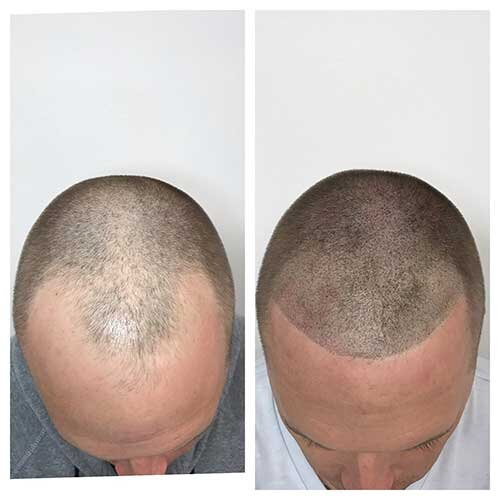Scalp Micropigmentation (SMP) is a non-surgical cosmetic procedure that uses detailed micro-needles to deposit pigment into the scalp. The result creates the appearance of tiny hair follicles, helping individuals achieve a look of fuller, thicker hair. It's a versatile treatment suitable for those with hair loss, thinning hair, or scalp scars.
How It Works:
-
Consultation:
- The practitioner assesses the scalp and discusses the client’s desired hairline and coverage.
- The appropriate pigment shade is selected to match the natural hair color.
-
Preparation:
- The scalp is cleaned, and the area is prepped.
- Numbing cream may be applied to minimize discomfort.
-
Application:
- Using a micro-needle, the technician implants pigment dots into the dermis layer of the scalp.
- The dots mimic the look of natural hair follicles.
- Sessions are spaced over a few weeks, with each session building upon the previous one for density and detail.
-
Aftercare:
- Clients are advised to avoid sweating, swimming, or exposing the scalp to direct sunlight for a few days post-procedure.
- Moisturizing the scalp and following the practitioner’s care instructions is crucial.
Benefits:
- Natural Appearance: SMP creates a realistic illusion of a full buzz-cut or adds density to thinning areas.
- Non-Invasive: It's a minimally invasive alternative to hair transplants.
- Quick Recovery: Downtime is minimal, with most people resuming normal activities shortly after.
- Long-Lasting Results: With proper care, results can last 4–6 years before requiring touch-ups.
Ideal Candidates:
- Men and women experiencing baldness or thinning hair.
- People with alopecia or other hair loss conditions.
- Those seeking to camouflage scars from hair transplants or injuries.
Risks and Considerations:
- Possible redness, swelling, or sensitivity after the procedure.
- Choosing an experienced SMP artist is crucial to avoid unnatural-looking results.
- Results are semi-permanent and may require periodic maintenance.


